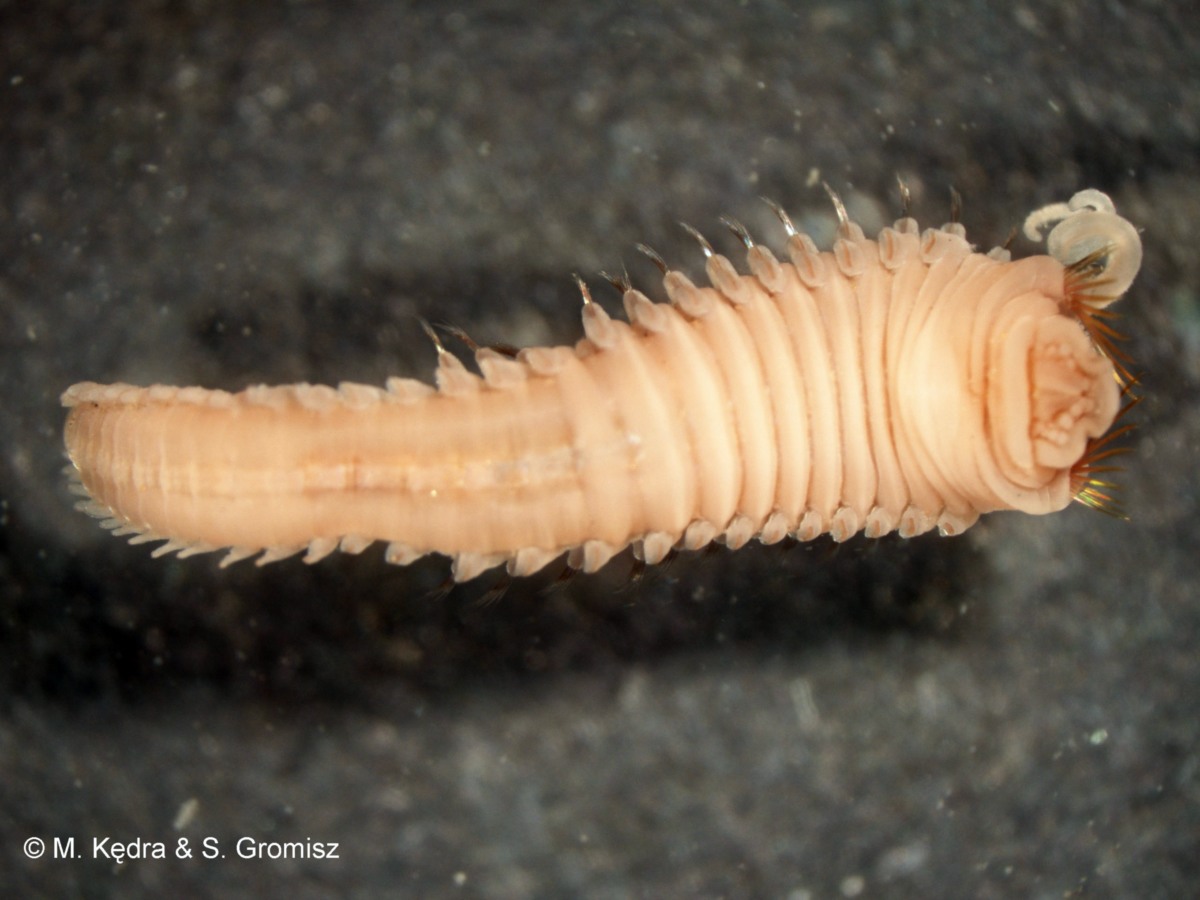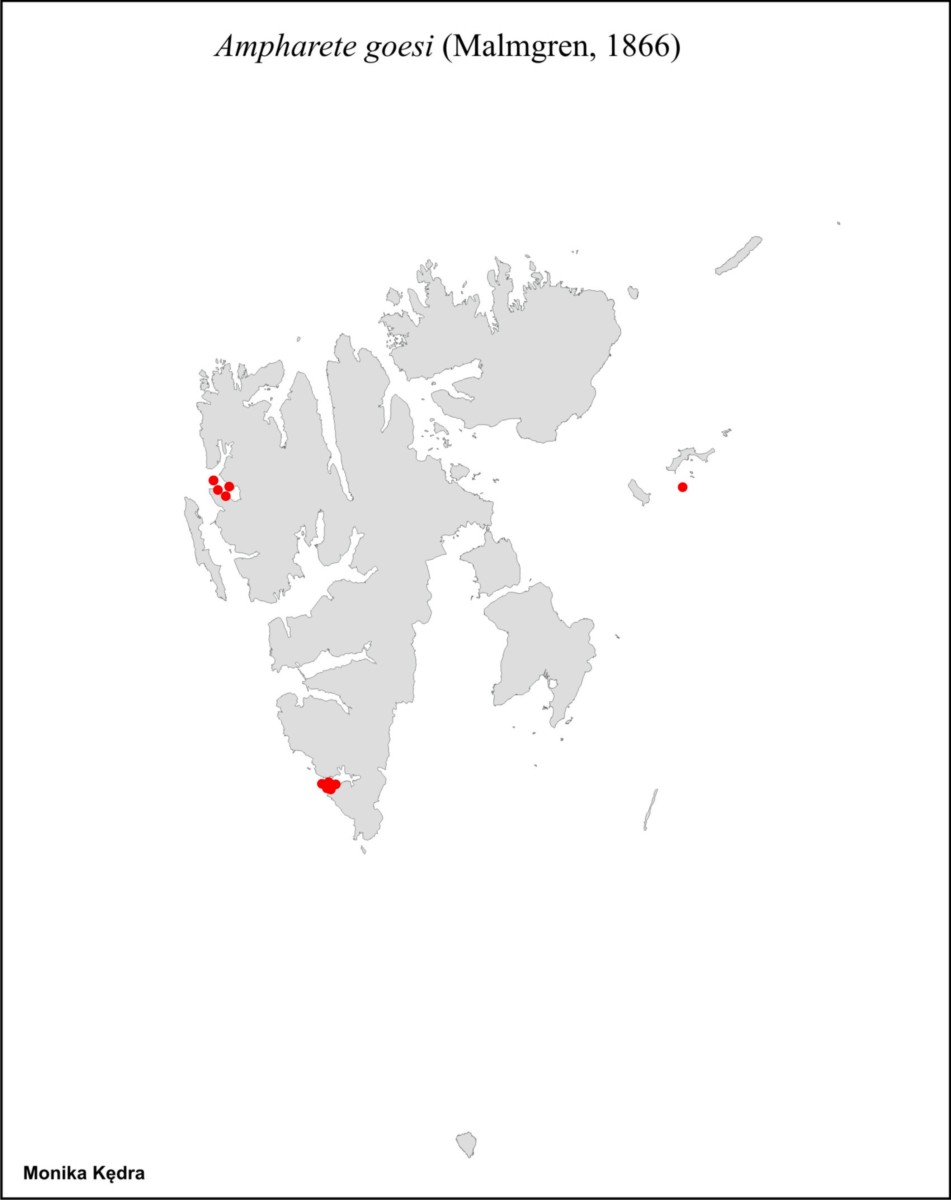Ampharete goesi Malmgren, 1866

|

|
No synonyms
Distinguishing characteristics
Thorax with 14 noto- and 12 pairs of neuropodia.
Long and stout paleae.
Branchiae in two groups separated by a distance of one branchial base and connected by a low dermal ridge; first three in each group in a transverse row, the four just behind the middle one of the three.
Species description
Prostomium with three lobes and two small eyespots. Paleae long and stout with short, sharp tips, 10-23 on each side. Branchiae in two groups separated by a distance of one branchial base and connected by a low dermal ridge. First three branchiae in each group in a transverse row, the four just behind the middle one of the three. 14 thoracic segments with normal notopodia with capillary chaetae, the posterior 12 also with neuropodia with uncini. Usually 17 or 18 (16-21) uncinigerous abdominal segments. Pygidium with two moderately long cirri and a number of low conical papillae. Tube – a thick layer of secretion incrusted with silt and often also with foraminiferans, shell fragments and sea urchin spines.
Size
Up to 50 mm long.
Color
Alive: orange with green branchiae.
Habitat
Fine mud or clay. 30 – 170 m.
Mobility
Sedentary.
Feeding
Surface deposit feeder.
Facultative suspension feeder.
Life cycle
Distribution
Barents Sea, Siberian, Canadian and Alaskan Arctic, Bering Sea, North American Pacific, Sea of Okhotsk, Japan Sea. East Greenland, Svalbard, Iceland.

